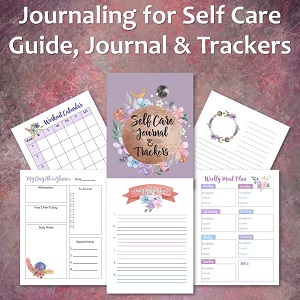 Midlife crises are so common that most everyone has heard of them. However, it seems that you hear far more about male midlife crises than those experienced by women.
Midlife crises are so common that most everyone has heard of them. However, it seems that you hear far more about male midlife crises than those experienced by women.
We know the male midlife crisis frequently involves hair dying, club-hopping, buying expensive items like fancy cars, or even starting scandalous relationships, but what does a female midlife crisis look like?
One of the biggest problems facing women approaching the age of 50 that are close to suffering a midlife crisis is identity issues. In this article, we’re going to discuss why this is, how to identify it, and what you can do to help.
Why are Identity Issues So Prevalent in Women Turning 50?
Women are asked to give up quite a bit in their daily lives and this was all the more relevant to those approaching 50 now than it will be for those turning 50 a decade or later from now.
Even so little as 20-30 years ago, mothers were frowned upon for choosing to work, rather than stay home with their kids. Many of those women gave up dreams, education, careers, and passions for their children, resulting in a feeling of “mom” being their only identity.
Appearance also plays a key role in this identity crisis. For those that put great stock in their appearance in younger years, it’s easy to experience identity issues as that appearance transforms into its next stage in life.
As people approach 50, they start to take stock of their life so far. This is typically considered the middle point of most people’s lives: old enough to have something to take stock of, but young enough to still change the direction in which your life is going. This sparks some of these feelings.
Another source is that, as women get older, they tend to go unnoticed by society. This is especially difficult for women that have grown accustomed to getting a lot of attention in their younger years.
How can You Identify Identity Issues in Women Approaching 50?
While each person goes through their own journey with their midlife crisis, there are some similar signs that could help you identify it in someone you love. The following are common tell-tale signs of identity issues:
- Dramatic changes in appearance, especially in an effort to look younger: dying hair, dramatic makeup changes, wardrobe changes (sometimes inappropriate clothing), plastic surgery, etc.
- Massive spending: shopping sprees, concerts, frequent bar trips, cars, etc.
- Spending more time with new friends, typically of a younger generation, and less time with old friends.
- Dramatic career changes: quitting their job, taking on a risky entrepreneurial endeavor, starting an entirely new career path spontaneously.
- Dramatic behavioral changes, most commonly in an effort to either appear younger or to get noticed.
What Can You Do to Help?
Whether you notice these behaviors in yourself or someone you care about, you shouldn’t ignore them. Midlife crises could be harmless, but they could be indicative of a further psychological concern that needs to be addressed.
Talk to Them/Ask for Help
You’ll have to approach the topic gently, but the best first step is to express your concerns to the person you love. They may be just looking for the opportunity to address the issue, but don’t know how or lack the confidence to broach it. If they’re unwilling to address the issue or even admit to it, gain support from other loved ones that have noticed similar behaviors.
In the case of catching this behavior in yourself, you should talk to a person you trust who loves you and cares about your wellbeing. Express your concerns and ask them for their help and support.
Suggest a Counselor/Go to a Counselor
The next step is to talk to someone that can help guide you through this phase. A counselor, therapist, or psychologist could all be instrumental in guiding you or your loved one through this struggle.




